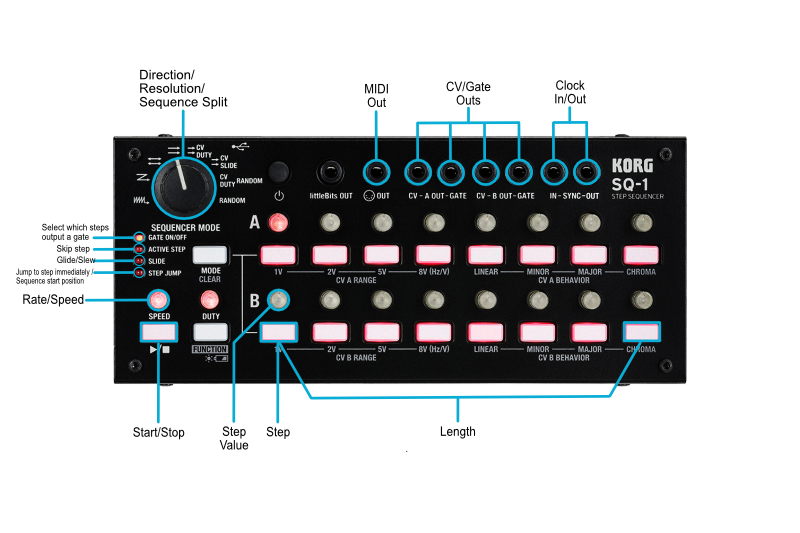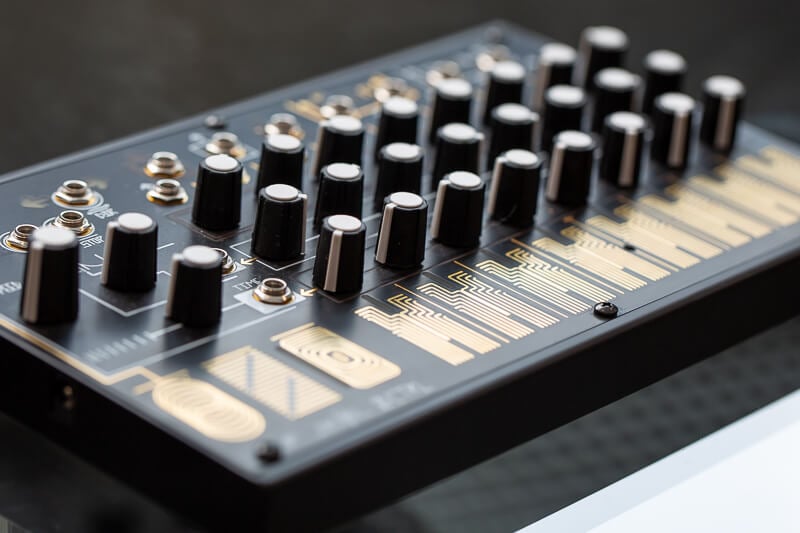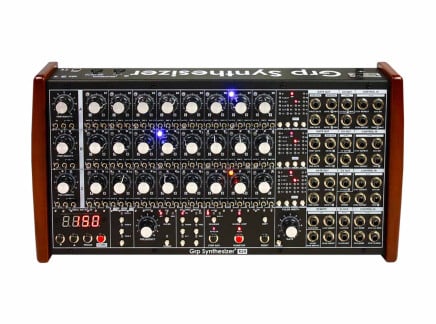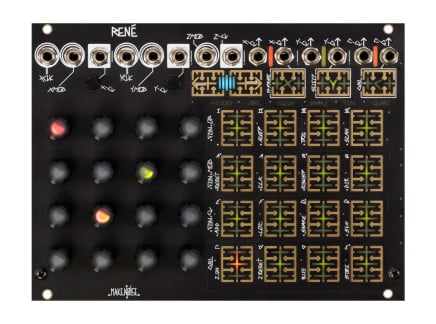In the previous article we've covered the history of music sequencers, and their evolution. Today sequencers are ever more present both as complex stand-alone controllers, and embedded as a central feature in a variety of music software and hardware. Despite their abundance and variation, many elements and terminology related to musical sequencers are universal, and it is important to have a grasp on these concepts to feel comfortable operating them. In this article we will talk about those commonalities.
We will also take a closer look at a few modern music sequencers, emphasizing their individual features and workflow specifics. Along the way we will touch upon some tips and tricks associated with programming, performing, and composing with sequencers.
Essentials and Global Parameters
On the surface, various sequencers may look very different from one another, but they all serve the same essential purpose of organizing and modifying musical events in time. The workflow, implementation, and interfaces may vary, but there are certain aspects that are shared across all sequencers.

For starters, all sequencers require a clock—a pulse signal that establishes the rate at which the sequencer advances (aka tempo). It is fair to say that many sequencers possess a built-in internal clock, and often they feature a dedicated output for this clock so that it could be used to drive other equipment. For the same reason, you will often find an external clock input on many sequencers, which allows them to be synchronized to a beat on another piece of gear.
Every clock pulse advances the position of the sequencer to the next step, and depending on the sequencer in question, each step can contain any amount of vital information about a given musical event...such as whether or not a note was triggered, its pitch, volume, and so on.
A collection of sequencer steps determines the length of the sequence. While a sequencer may have a predetermined maximum amount of steps, the length of the sequence can often be trimmed down to accommodate the needs of a composition. Expanding sequences beyond the maximum number of steps is also possible in many devices via chaining pages, parts, patterns, songs, etc. (the naming convention varies).
Direction defines how playback moves across sequencer steps. Besides expected options for forward and backward movement, depending on the device you will also encounter pendulum-like behavior and non-linear modes like random step selection. Playing around with the direction of a sequencer can be very inspiring compositionally and a great tool for performance.
Programming Expressivity
It is one thing to play a basic melody, harmony, or rhythm on an instrument, and yet a very different story to play that same combination of notes and rests spiced with nuances of different techniques. Every musician knows the value of expressivity in an instrument, and some instruments have more “room” for it than others. Unlike musical instruments that rely on physical gestures to convey musical ideas, sequencers are blank canvases where all the information about the performance needs to be programmed into it. This may sound like it is less fun from a performer's perspective, however this provides an access to a great level of detail, and as workflows across sequencers vary, the actual aspect of programming those parameters can be very immediate and fun. But before we get into the specifics of different workflows, let’s get acquainted with the variety of programmable parameters.
Let's start with articulation—a set of parameters that determine how a single musical event is executed. Such parameters encompass loudness or intensity of the note-event, its length, and its shape as it transitions across the composition.
Loudness is programmed into a sequencer the same way the pitch is—you specify a value per step and it dynamically translates to a shift in velocity in MIDI equipment or to amplitude on a VCA in CV/Gate-equipped gear. It is important to understand here that in a CV/Gate sequencer, multiple parameters are programmed individually on separate sequencer tracks, while in the world of MIDI, a single message can contain a variety of information about the performed note.
The length of the note is determined by the width of the gate signal in analog sequencers or by the duration of the note-on event in MIDI. A glide or slew parameter defines whether a transition from one step to another is immediate or it happens smoothly over a specified period of time. This is effectively a manifestation of the concepts of tie and slur (legato) which are expressed as bowed lines in Western musical notation system.
Skip is a parameter that is rather common for analog sequencers, and it is usually expressed as a dedicated switch for each step in a sequencer. When skip is activated on a step the sequencer jumps over that step. This can be used creatively to reorganize the sequence in real time and as another means to define the length of a sequence. Good modern examples utilizing this feature are the Dark Time sequencer from Doepfer and the R24 from Grp.
Shuffle or swing amount control allows you to loosen up your rhythms in order to achieve a certain groove. More often this parameter is applied globally, but some sequencers allow you to make this adjustment per track (Ex.: Erica Synths' Drum Sequencer). In basic terms, this is accomplished by moving certain notes a little bit before or after the beat. However, exactly how this control is implemented varies across devices, and it can be a very distinctive element of a sequencer.
Following the demand to create increasingly complex and intricate rhythms many modern sequencers also offer ratcheting—a parameter that allows users to program bursts of triggers of various note values per-step. Anything from 8th and 16th note divisions to common tuplets can be programmed to trigger on any given step—a feature that would make any IDM or Breakcore producer circa late-90s jealous. Ratcheting may be found in many modern day sequencers. Examples include the Intellijel Metropolix, Malekko Varigate modules, WMD Metron, and others.
Some sequencers also allow users to define step duration (how long a sequencer stays on a certain step). This is not very common, and only a few devices have this feature built into them, but those that do open room for some very unique sequencing possibilities. Inspired by RYK Modular's M186 sequencer for Roland modular systems, the Intellijel Metropolix allows you to rest on or repeat individual steps for up to 8 pulse counts of a clock. With a significantly different approach, Buchla's 248 Multiple Arbitrary Function Generator (MARF) influenced the designs of Make Noise's 0-CTRL, Verbos' Voltage Multistage (some self patching involved), and the Frap Tools USTA, which offer users to continuously adjust the step duration parameter. Of course, this feature can even be programmed using the classic Moog 960 or similar devices simply by patching one of the sequencer's outputs back into its clock generator's frequency CV input.
Probability and Randomness
While using electronic instruments grants the composer-musician an unprecedented amount of control over each and every element of the composition, part of what makes playing music with other people so much fun is exactly the element of uncertainty of what the other person may do. Chance and a certain level of randomness allow for new things to enter and to pave new musical pathways. This was noticed in the mid 20th century by the composer John Cage, and the concept naturally penetrated the world of electronic music, influencing the emergence of such movements as ambient music, generative and algorithmic composition. There are many ways to let go of control and let the element of chance into your compositional process, and sequencers are a great framework for that.
Some sequencers allow for randomization of their parameters to a varied extent. Let's take the Winter Modular Eloquencer as an example. This sequencer presents a myriad of ways to inject the element of chance into your compositions. With a press of a button you can create entirely new randomly generated patterns—this can be approached as a point of inspiration, and you can modify the sequence to suit your needs best further. Eloquencer also allows you to select which particular parameters should be randomized. This is a more subtle approach, and you can use it to create variations on the same sequence as you develop it. For example, you can keep the same rhythm but randomize gate lengths and ratcheting options for each step. Furthermore you can even let fate decide how to move across the sequencer patterns with such options as coin toss mode (50/50 chance the sequence will move to next or to previous pattern), and drunk mode (with each iteration the sequence lands either on previous, current or next pattern).
Probability is yet another way to spice up your sequences and make them less predictable. In sequencers, probability is typically expressed in percentages specifying the likelihood of some events to occur. Malekko's Varigate 4+ and 8+ are excellent examples of such. The modules' slider-based interface provides a very intuitive way to set the probability of each step triggering, thus making it insanely easy to create complex sequences with minimal hand movements. The above mentioned Eloquencer also allows you to dial in the likelihood of triggering per step, however it takes the concept even further and lets you apply probability settings to choose between two different CV values, gate lengths, roll types and ratcheting variation, etc. Probability ratios can also be accessed in the sequencers built into the Elektron machines, which have become staples for modern day electronic music production and performance.
Outside Influences
Not only can sequencers provide control for your entire setup, but many are also equipped to accept external signals (or MIDI data) beyond simple clock pulses and respond to them in various ways. For example many MIDI-enabled sequencers will allow you to connect an external controller to enter data into the sequence, transpose the sequence, control parameters, etc.
Given the nature of Eurorack format where anything can potentially influence anything via CV/Gate I/O, this can get very interesting. Using modulation sources to control the rate of the sequencer or to scan across sequencer steps is only a tip of the iceberg. Complex digital sequencers like Metropolis, Eloquencer, and Squarp Hermod have assignable CV inputs which can process control voltages internally by the sequencer (i.e. quantize it) and/or apply it to control sequencer parameters (i.e. transposing, offsetting, randomizing, muting/unmuting channels). Feedback patches with sequencers may also yield very unique results. For example, you can use one of the channels on the sequencer to dynamically change the global speed of that sequence, shift octaves per step or alter the length of the sequence.
Choosing The Right Sequencer
With such an abundance of modern music technology, how to choose the right device for one's needs becomes one of the most challenging tasks. Seeing that one device offers 8 sequencer channels, while another one is only equipped with one or two may tip the scale towards the former in one's mind...because of course more is better, right? In practice, though, you'll get the most benefits when the workflow associated with a device inspires your creative process the most.
Digital multichannel sequencers are great at being control hubs providing a great level of detailed manipulation of parameters for several devices at once. With this also comes a certain complexity of use, and potentially a noticeable delay between an idea and a result as one has to spend time programming all of those individual elements. The level of enjoyment taken in the process of programming sequencers is very individual, and thus this workflow will work for some and not for others. For example, a powerful sequencer like Polyend's (now discontinued) Seq allows you to individually program 8 polyphonic sequencer channels, each up to 32 steps long. Every parameter within individual sequence tracks can be programmed independently allowing a fine control over pitch, velocity, note duration, modulation, and roll. Furthermore you can chain together up to 256 patterns together for longer sequences, and store everything using internal memory. With all of these powerful features in place it is easy to imagine this sequencer as a central control/composition station within your setup, as well as how meticulous the process of programming it may get. Fortunately designers of Seq offer some workflow solutions to step beyond the step-by-step editing like randomization of parameters, and live sequence recording. Even then it is worth considering whether such a massive sequencing machine fits your personal workflow.
If you are a type of person that values immediacy in the creative process, a one- or two-channel sequencer may be a much more effective tool for you. Afterall, there is no shortage of ways electronic music equipment can be combined with one another. Combine a sequencer with a looper to layer parts. Split the output of the sequencer, use some of the outputs to feed a sample and hold or an analog shift register, attenuate or reverse an output, run an output through a lag processor and you've got several related but different sequences. Again, limitations can really get creative juices flowing. Verbos Electronics' Voltage Multistage is a great example of such straight-forward, yet open and tweakable sequencer. Two sets of eight sliders, and eight dedicated switches are very easy to control and follow. Independent gate outputs per step are very useful for triggering different audio events in your patch. The sequencer can also be reconfigured in many ways, offering options to adjust lengths of the sequences or influence a non-linear movement of the playhead. A similar approach can be taken with Make Noise's 0-CTRL, Brains + Pressure Points combo, and Random Source's Serge TKB. All of these tools present a very immediate and inspiring way of interacting with your instrument, yet if you are looking for something to compose pieces with many changing parts that are all stored and recalled at will, the limited amount steps, and channels, as well as no internal memory or ability to save presets may appear to you as shortcomings.
Another thing to decide on is what shape would you want the sequencer to come in: standalone, eurorack module or software. Software sequencers take no space, but then you have to use a computer or a tablet. Eurorack sequencers tend to not be merciful on the HP, but if your modular synth is your main instrument, having a sequencer racked means that you don't need to carry any additional hardware for your gigs. Finally, standalone sequencers can provide a very clean workflow with no cable-clutter, albeit you have to carry them separately. You can also utilize sequencers native to the groovebox you are using, and then again that machine then needs to be essential to your workflow as other pieces will be dependent on it.
For many hybrid-setup scenarios you may also want a MIDI-to-CV and/or CV-to-MIDI interface to translate the data and signals across formats. Some sequencers like Squarp Pyramid and Hermod have a MIDI-to-CV interface built into them, but in the vast majority of cases you'll require a separate device (or an expander) to handle that. Expert Sleepers FH-2, Endorphines Shuttle Control, Tubbutec uTune, and Befaco's VCMC are some of the best options.
You may also find that one sequencer is not enough for you, as different workflows spark up new ideas, and you may prefer one sequencer for melodies, another one for drums, and yet another one for various nonlinear experimental tricks. Or maybe a certain sequencer works best for you in the studio, while another one checks all the boxes as a performance instrument.
With all of that said, of course the best way to find out which tools suits your needs best is to keep trying them, and take notice as you go of how you feel using this or that. The good news is that in the present landscape of music instruments, everyone can surely find something that helps their creative expression best.















